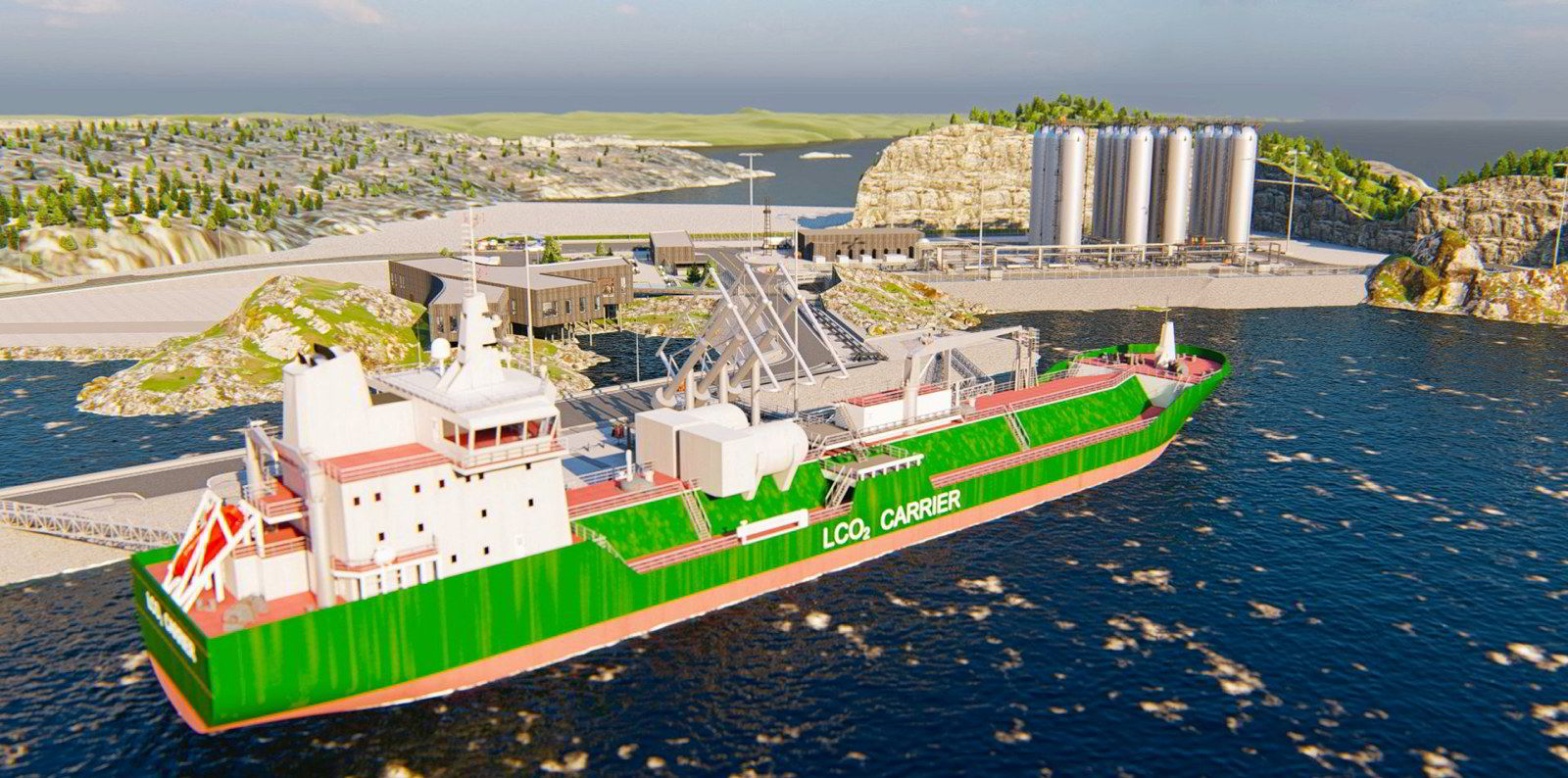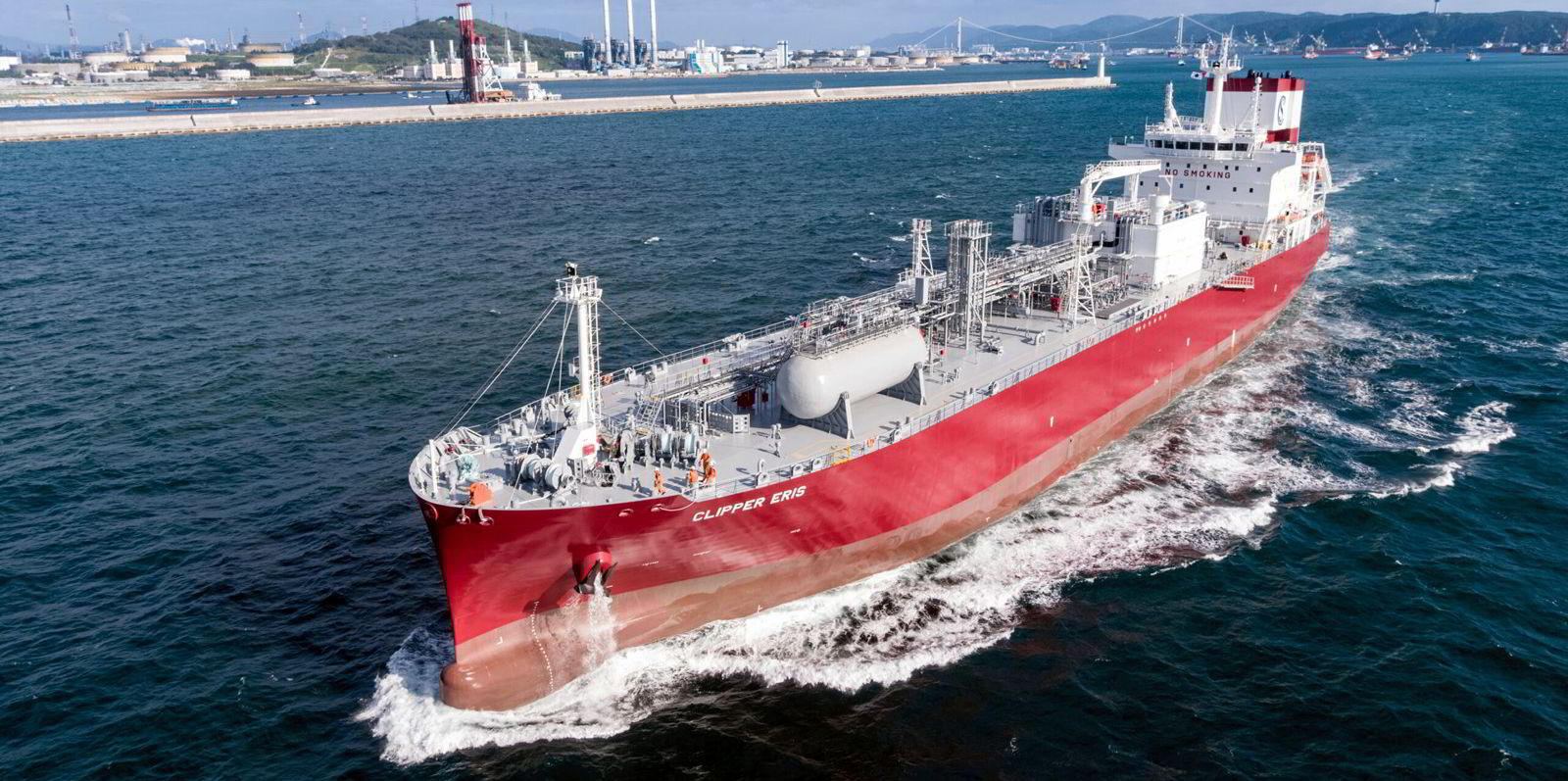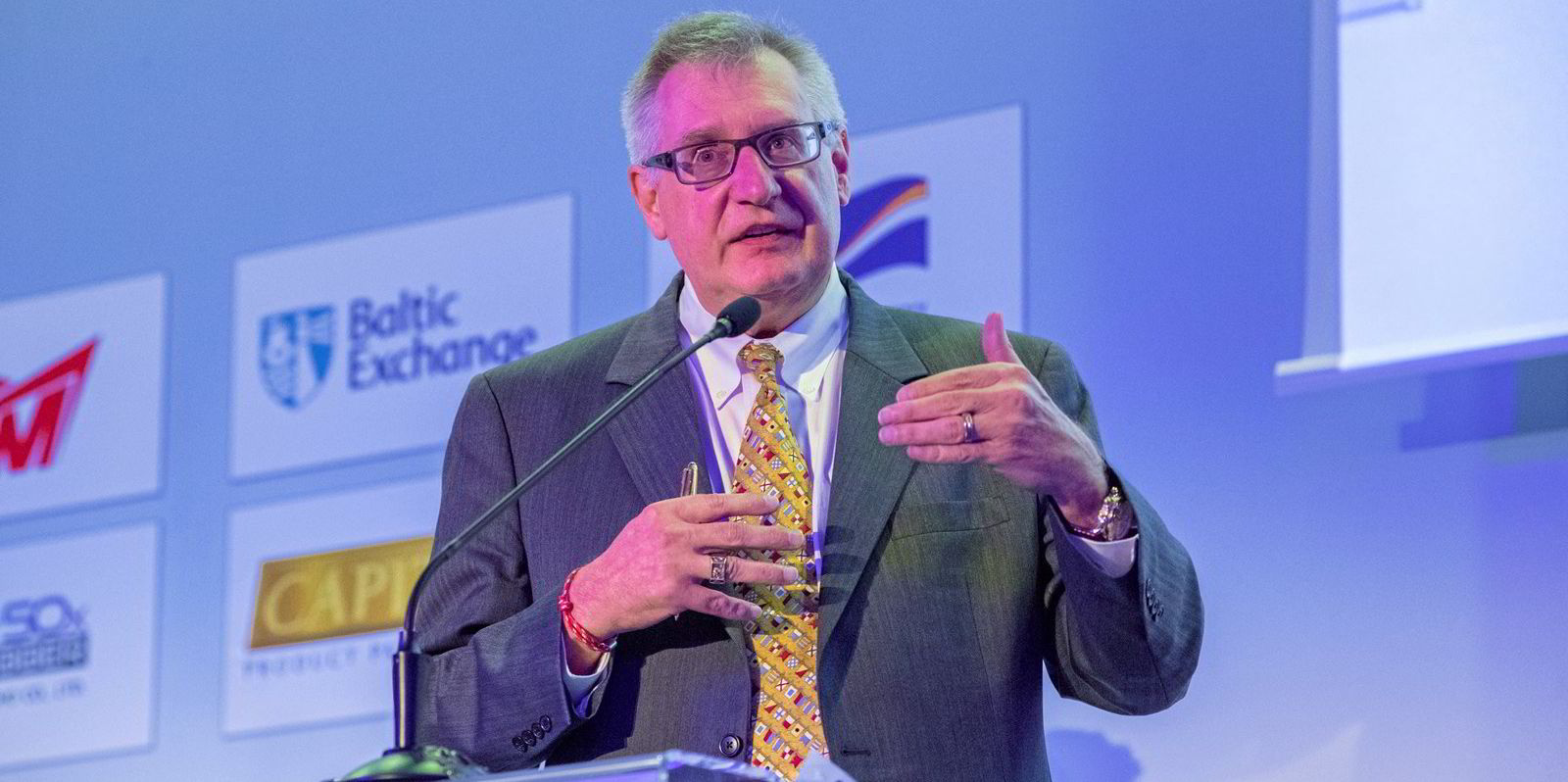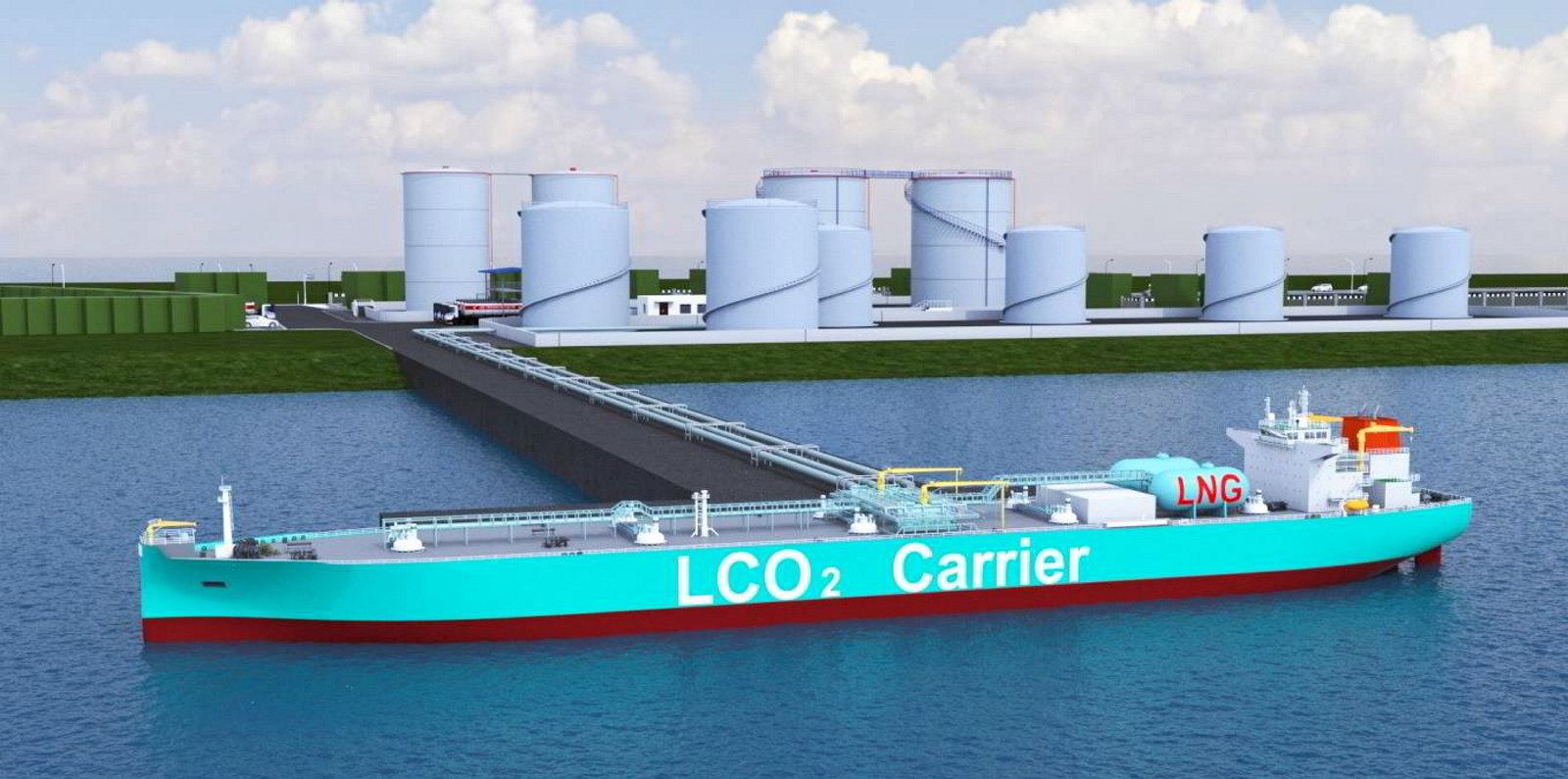Could the liquefied CO2 market be as big as tankers are today?
With companies piling into Norway as the government makes a big bet on carbon capture and storage (CCS), the possibilities of a liquefied CO2 carrier market are being discussed as a once-in-a-generation opportunity for shipping.
“If you look at … the level of peak CCS, that is the same size as today’s oil” market, Altera Infrastructure Partners’ Johanne Koll-Hansen Bo told TradeWinds.
“We are talking about a fleet that I think is difficult for us to imagine today, how large this can become.
“For the shipping industry, this is a unique opportunity. Maybe we haven’t seen this since the beginning of the oil industry.”
Estimates of how many liquefied CO2 carriers will be needed vary wildly. DNV suggests between 50 and 150 carriers by 2030, while Rystad Energy forecasts 55. By 2050, DNV’s estimates swell to 600 and others larger still, at 900.
Altera is poised to chip in as many as four as part of its Stella Maris CCS project. Along with Wintershall Dea, the shuttle tanker owner has won a bid to develop the project on the Norwegian continental shelf.
Altera is also working with Aker Carbon Capture to develop the CCS value chain.
Stella Maris is intended to sequester 10m tonnes of captured carbon per year, collected at onshore hubs and carried to an injection site at sea by low-pressure, 50,000-cbm carriers.
The smaller government-backed Northern Lights project aims to store 1.5m tonnes of CO2 per year, captured in western Norway.
The project, backed by Equinor, Shell and TotalEnergies, already has orders in for three carriers of 7,500-cbm each.
The ships will be built by China’s Dalian Shipbuilding Offshore Co for delivery beginning in 2024. They will be run by Japan’s K Line.
Together, the two projects have boosted Norway to the top of the CCS league table, according to figures from the International Energy Agency, which forecasts the country to have the most storage capacity by 2030 — 2.3m tonnes.
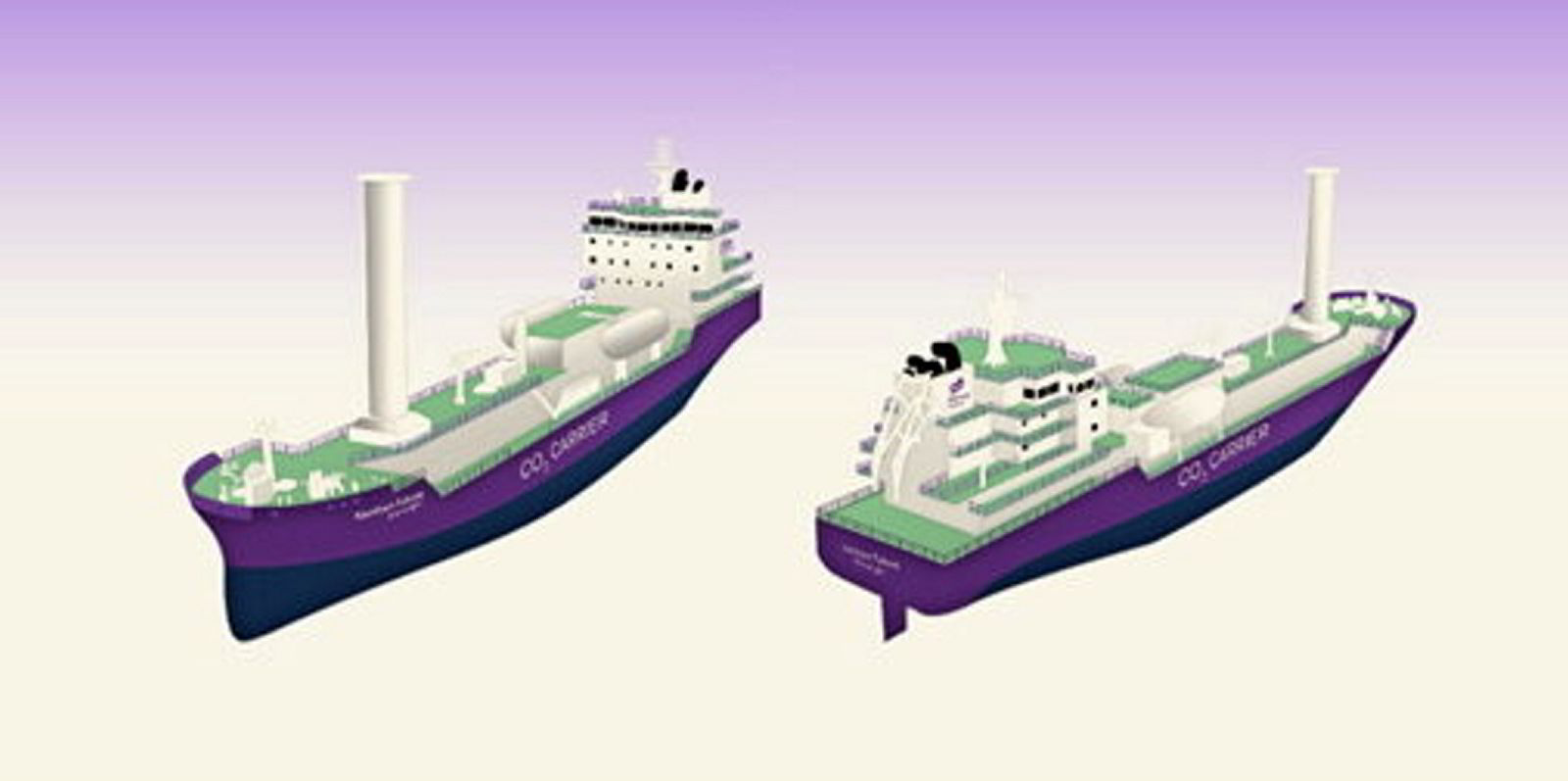
Oslo-listed Hunter Group is looking to order a liquefied CO2 carrier of between 40,000 cbm and 70,000 cbm, as well as smaller feeder vessels.
Buying ships independent of projects presents a more challenging proposition for owners, according to DNV CO2 carrier business development manager Mathias Sorhaug.
He said there are questions to be answered regarding transportation temperature, pressure and the level of impurities.
“You have many of these things which are project-specific,” he said. “With a pure CO2 carrier, I think it will be necessary to have very clear discussions on both ends of the transportation chain.”
Sorhaug expects a number of ships serving the segment to be on the water by 2030, but standardising the fleet and cargoes and allowing for a robust charter market is years away.
“It will take some time before you see standardisation of these designs and standardisation of the specification of the CO2,” he said.
“We also have issues with the different types of emitters that will have different type of impurities. That comes together with the CO2 which together becomes quite nasty stuff.”
For Koll-Hansen Bo, the timeline for CCS to become a fully fledged shipping segment is years, not decades.
“The industry and the government recognise that without CCS, we will not achieve our climate goals. There is no chance,” she said.
“Now within the next 15, 20 years, we will see a large CCS market because it’s really incentivised by how we see the prediction on the cost of CO2 emissions.”
